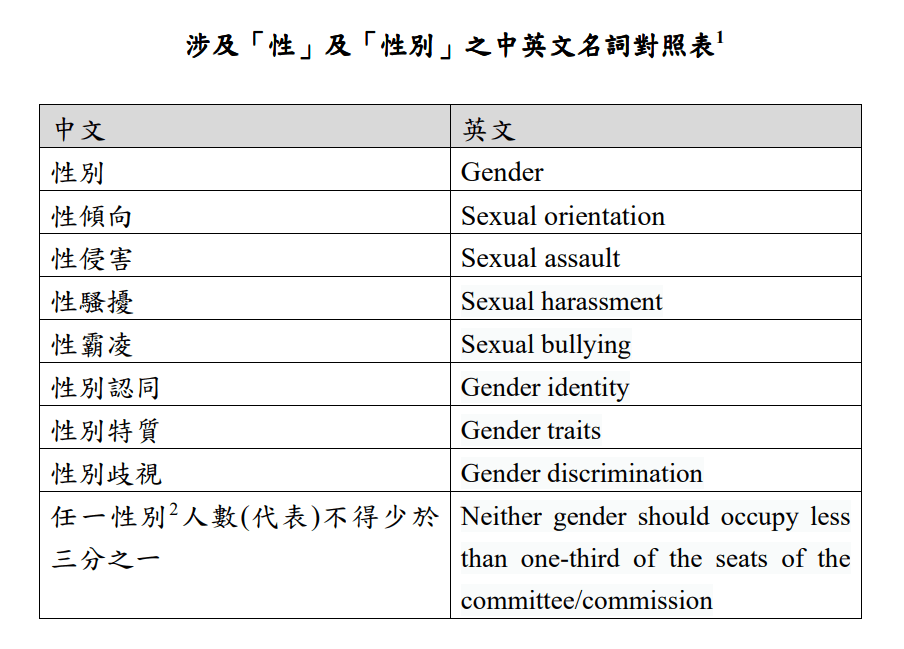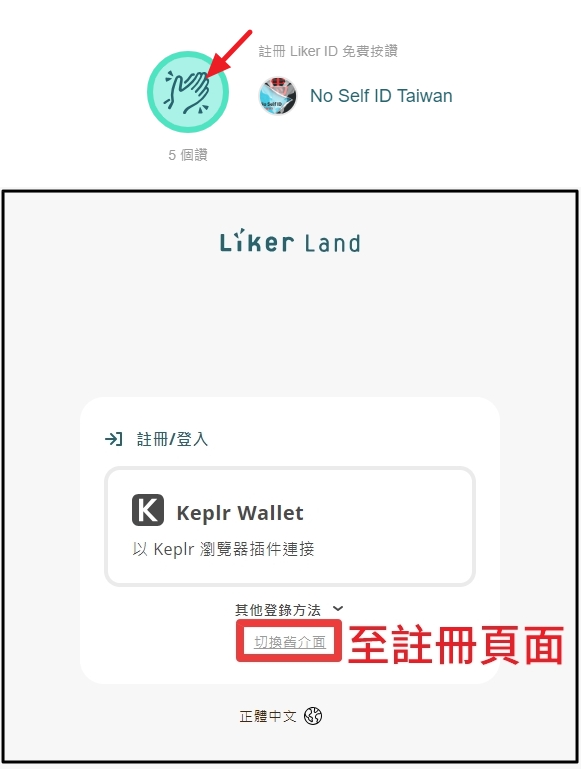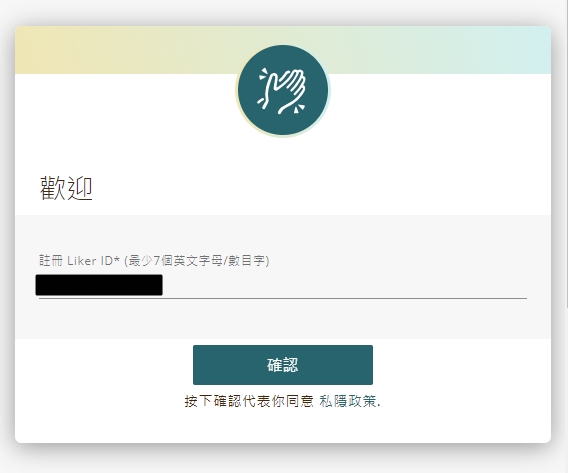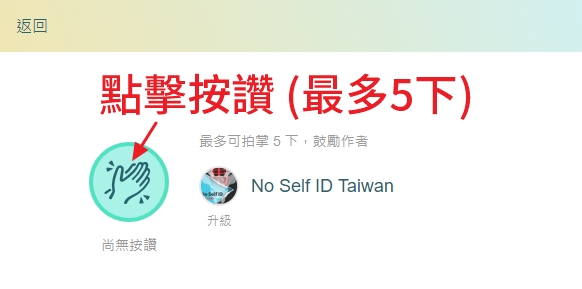(本頁內容由 K 撰寫)
性別變更立法
性別主流化
1995 年聯合國第 4 屆世界婦女會議通過「北京行動宣言」,正式以「性別主流化」作為各國達成性別平等之全球性策略。「性別主流化」是一種策略,也是一種價值,希望所有政府的計畫與法律要具有性別觀點,並在作成決策之前,對男性和女性的可能影響進行分析,以促使政府資源配置確保不同性別平等獲取享有參與社會、公共事務及資源取得之機會,最終達到實質性別平等。1
性別相關法令
見 行政院性別平等會 網站。
消除對婦女一切形式歧視公約
Convention on the Elimination of All Forms of Discrimination against Women (CDEAW)
簡介
1979 年聯合國大會通過「消除對婦女一切形式歧視公約」(以下簡稱 CEDAW),並在1981年正式生效,其內容闡明男女平等享有一切經濟、社會、文化、公民和政治權利,締約國應採取立法及一切適當措施,消除對婦女之歧視,確保男女在教育、就業、保健、家庭、政治、法律、社會、經濟等各方面享有平等權利。
我國為提升我國之性別人權標準,落實性別平等,經立法院於2007年1月5日議決,2 月 9 日總統批准並頒發加入書。「消除對婦女一切形式歧視公約施行法」,經立法院 2011 年 5 月 20 日三讀通過, 總統 6 月 8 日公布,自 2012 年 1 月 1 日起施行。
CDEAW 除要求各級機關採取立法或行政措施,消除性別歧視,並積極促進性別平等各級政府行使職權,應符合公約有關性別人權保障之規定,並應籌劃、推動及執行公約規定事項。同時需依照 CEDAW 規定,每 4 年提出我國消除對婦女歧視國家報告,並邀請相關學者專家及民間團體代表審閱。
參照:
前言
第一部分
歧視(第1條)
政策措施(第2條)
保障基本人權和基本自由(第3條)
暫行特別措施(第4條)
性別刻板印象和偏見(第5條)
賣淫(第6條)
第二部分
政治和公共生活(第7條)
代表權(第8條)
國籍權(第9條)
第三部分
教育(第10條)
就業(第11條)
健康(第12條)
經濟和社會生活(第13條)
農村婦女(第14條)
第四部分
法律(第15條)
婚姻和家庭生活(第16條)
第五部分
CEDAW委員會(第17條)
國家報告(第18條)
議事規則(第19條)
委員會會議(第20條)
委員會報告(第21條)
專門機構的角色(第22條)
第六部分
對其他條約的影響(第23條)
締約國的承諾(第24條)
公約的行政(第25條 ~ 第30條)
法條摘錄第一條說明其宗旨精神
- 第一條
- 在本公約中,“對婦女的歧視"一詞指基於性別 (sex) 而作的任何區別、排斥或限制,其影響或其目的均足以妨礙或否認婦女不論已婚未婚在男女平等的基礎上認識、享有或行使在政治、經濟、社會、文化、公民或任何其他方面的人權和基本自由。
Article I
For the purposes of the present Convention, the term "discrimination against women" shall mean any distinction, exclusion or restriction made on the basis of sex which has the effect or purpose of impairing or nullifying the recognition, enjoyment or exercise by women, irrespective of their marital status, on a basis of equality of men and women, of human rights and fundamental freedoms in the political, economic, social, cultural, civil or any other.
CEDAW 國家會議爭議 (一):「sex」與「gender」差異的中英翻譯事件
筆者 K 引言:
Self-ID 制度,「我就是我自我認同的性別身分,且社會制度與國家法律都承認並為此背書」。在法律上及制度上推翻以生理性別 (sex) 為基礎的制度,並以社會性別 (gender) 取代生理性別 (sex),是跨運倡議者的長期倡議目標。
筆者認為,跨性別運動推動的免術換證法制問題,並不只是有關跨性別認同的少數族群,而是關乎法律上如何定義「女性」與「男性」? 法律上如何定義「性別」及與「性別」相關的權利?
而跨性別運動在法律及制度上混淆「生理性別」與「社會性別」所帶來衝擊與後果在實行 self-ID 的國家已經上演。
這也是為什麼女性作為受到「跨性別免術換證」受到影響的一半人口必須關注的原因。
在台灣,已有類似的法律名詞爭議在 CEDAW 國家會議中出現,以下整理事件經過。
CEDAW 第三次國家會議
- 消除對婦女一切形式歧視公約(CEDAW) 中華民國(臺灣)第 3 次國家報告 審查委員會結論性意見與建議(中文版定稿) 2018 年 7 月 20 日 (pdf)
2018 年,「消除婦女一切歧視公約 (以下簡稱 CEDAW) 第三次國家會議」中審查委員會提出了中文性別不能如實傳達「sex (譯作生理性別)」與「gender (譯作社會性別或性別角色)」的差異意見:
- 10.
- 審查委員會關切「性 (sex) 」與「性別 (gender) 」二詞在概念上與實際上的不當運用。在 CEDAW 法理中,公約提及基於性的歧視,但亦涵蓋對女性基於性別的歧視。「性 (sex) 」意指男女生理上的差異;「性別 (gender) 」意指社會建構的男女身分、歸屬和角色,以及社會賦予這些生理差異的社會文化意義,導致男女之間的階層關係以及權力和權利的分配有利於男性而不利於女性。
- 11.
- 審查委員會建議臺灣政府依照 CEDAW 和 CEDAW 委員會第 28 號一般性建議統一所有法律和政策文件用詞,並促進對「性 (sex) 」與「性別 (gender) 」正確、一致之認知。
《CEDAW 第四十七屆會議 (2010) 第 28 號一般性建議說明》
第 4 點說明《公約》適用於基於生理性別 (sex) 的歧視。
4. The objective of the Convention is the elimination of all forms of discrimination against women on the basis of sex. It guarantees women the equal recognition, enjoyment and exercise of all human rights and fundamental freedoms in the political, economic, social, cultural, civil, domestic or any other field, irrespective of their marital status, and on a basis of equality with men.
第 5 點說明《公約》不只適用基於生理性別 (sex) 的歧視,也適用基於社會性別 (gender) 的歧視。
5. Although the Convention only refers to sex-based discrimination, interpreting article 1 together with articles 2 (f) and 5 (a) indicates that the Convention covers gender-based discrimination against women.
第 5 點接著說明生理性別 (sex) 與社會性別 (gender) 之不同。
「生理性別(sex)」指的是男性與婦女的生理差異。
The term “sex” here refers to biological differences between men and women.
「社會性別 (gender)」指的是社會意義建構的女人及男人的身分、屬性和角色,以及社會對生理差異所賦予的社會和文化含義,導致男性與女性之間的等級關係,亦造成男性在權力分配和行使權利時處於有利地位,婦女則處於不利地位。
The term “gender” refers to socially constructed identities, attributes and roles for women and men and society’s social and cultural meaning for these biological differences resulting in hierarchical relationships between women and men and in the distribution of power and rights favouring men and disadvantaging women.
CEDAW 第四次國家會議
在 2021 年,「CEDAW 第四次國家會議」初稿中,性平處針對第三次國家會議審議意見釐清「生理性別 (sex) 與社會性別 (gender) 」的不同,性平處的回應,在於第四次國家會議第一條法規,並組織專家會議通過了一張中英翻譯對照表格:
「性」與「性別」的意義與運用
- 1.1
- 2020 年經邀集行政院性別平等會委員及專家學者召開會議討論確認,中文「性別」包含生理及社會性別之意涵,無須修正相關中文法規用語,僅需檢視法規英譯之正確性。此外,行政院性別平等處已依 CEDAW 及第 28 號 一般性建議之意旨,製作相關法規英譯原則,並上網公開涉及「性」與「性別」之中英文名詞對照表,請各部會就所主管法規進行檢視,並將檢視結果提供各部會性別平等專案小組委員確認。2021 年邀集有不同意見之部會性別平等專案小組委員及專家學者討論各部會檢視結果,並進行英譯原則之確認。未來涉及「性」與「性別」之法規英譯將參照上述英譯原則及對照表辦理。【性平處】
參照:110 年 05 月 07 日公告「CEDAW 第 4 次國家報告(初稿)」 page.1 及 page.100 CEDAW 第 3 次國家報告國外專家建議事項回應情形對照表 第 10 點 - 第 11 點
涉及「性」及「性別」之中英文名詞對照表 (性平處 2020 年 05 月 21 日公告) pdf
現在讓我們再回到《CEDAW 公約》第一條:
「For the purposes of the present Convention, the term “discrimination against women” shall mean any distinction, exclusion or restriction made on the basis of sex which has the effect or purpose of impairing or nullifying the recognition, enjoyment or exercise by women, irrespective of their marital status, on a basis of equality of men and women, of human rights and fundamental freedoms in the political, economic, social, cultural, civil or any other.」
性平處製作的中英對照英譯片面且未反映事實。在此將中文「性別」英譯簡化為「社會性別 (gender)」,如果說中文的「性別」並未區分「sex」及「gender」意涵,在翻譯時更不能因此過度簡化。
且 CEDAW 第四十七屆會議第 28 號一般性說明第 4 點及第 5 點詳述了其中的差異,婦女受歧視緣由不只因為生理性別 (sex),亦來自延伸至生理性別的社會角色 (gender)。
民間團體對此亦有批評:
[第一輪書面意見摘錄]
在消歧公約 (CEDAW) 第三次國家報告之國際審查會議中,多個民間團體提案,要求政府在概念上和用法上採取消歧公約 (CEDAW) 對於「生理性別 (sex) 及「社會性別」 (gender) 之定義,勿以意義不明確的「多元性別」取代消歧公約中的「女」、「男」,得到國際審查委員會充分的理解和認可。
可惜性平處召開會議討論審查委員會建議時,皆未邀請最初提案之民間團體、跨性別女性,亦未能正視審查委員的建議,並且不採納教育部國家教育研究院雙語辭彙審譯會的書面建議 (gender 譯為心理性別/社會性別,sex 譯為生理性別)。
只是將認知和定義問題簡化為名詞中翻英有誤差,決議由性平處做出一份名詞中翻英的對照表,(但 (初稿中) 並未同時提供英翻中對照表,)結果將國際委員所稱的"sex and gender"中的”sex”完全消除了,統一將所有法規和公文中的性別都翻譯為"gender",也就是消去生理性別,只有社會性別。
這樣做法不僅違反了消歧公約 (CEDAW) 的原則,也完全沒有回應第三次國際審查委員會的建議。請性平處在第四次國家報告國際審查會議舉辦之前,廣納民間團體及國際審查委員會的意見及時做出修正,真正落實民主與平等。
[第一輪書面意見摘錄]
我國各項文件之「性別」一詞一向皆指生理性別,「性別」一詞在中文的意涵,即以生理的「性」來分類的類別。所以,在我國「性別」一詞原來就是指「生理性別」。
Gender 為新的概念,依據 CEDAW 是指社會基於生理性別所賦予的意義,所以正確翻譯應為「社會性別」。
[2021 年 10 月 07 日座談會]
(1) 「關於性別,在 CEDAW 框架下有區分生理性別跟社會性別,這也是英文的語境,在中文上「性別」兩個字並沒有特別區分生理跟社會性別。在少數領域,例如醫學上所指涉器官、身體的需求之外,在多數地方性別常常都是交織的意涵,無法完全區分是生理還是社會性別。當初除結論性意見討論會議外,後面又召開專家會議,剛剛媽媽盟先進提到的意見都有納入持續討論。還有,在中文要處理的是如何使外國人了解 sex 及 gender,因此,在很多地方會翻譯成 sex/gender,兩者同時並存,所以並不是說性別就完全定義為 gender。」
(2) 「有關結論性意見翻譯 sex 及 gender 的翻譯初稿,最先是翻譯社幫忙翻譯,當時情況較為緊急,除了初稿之外,後面有性平處跟專家學者校對,後來改用聯合國 CEDAW 的中文版翻譯翻成性與性別,就是生理性別與社會性別的意思。」
針對性平處說明,顧燕翎教授回應:
[第二輪書面意見摘錄]
一、程序方面
說明中對「各界書面意見」的回應,將對我的回應與媽媽盟及丁雪茵教授一併處理,以致造成我的誤讀,謝謝提醒,不過我的意見偏向程序正義,並未改變。亦即有關人身的約定俗成的名詞(性別)在政策或法律上若需變更,應有公平、公開的討論,廣納相關人士 (stakeholders) 及專家的意見,包括各級教師、家長、消歧公約國際審查委員、國家教育研究院雙語詞彙審議會等。至今我們缺乏開放的意見交流。
性平處回應欄中所揭露之兩次研商會議之名單皆僅為與會專家中的少數人,應揭露完整的專家名單及其發言之會議紀錄,方能釐清理路,也才能了解消歧公約國際委員所指之概念和用法的錯誤— the inappropriate conceptual and practical use of the terms “sex” and “gender” in Taiwan —是否只是如性平處所認定的翻譯之誤。
二、sex and gender 的翻譯
在不同語境中,sex 翻成中文可以是性、性別、生理/心理性別或是性活動、性行為;gender 因為是較新的名詞,通常譯為社會性別或性別。中翻英而言,性可以是 sex, sexuality, sexual;性別可以是 sex 或 gender;生理性別是 sex;社會/心理性別是 gender。因為文化的差異和語言的因時改變,我們需要考慮名詞翻譯或許不應強求簡單的一對一關係。
有鑑於翻譯之複雜性,我於 2021 年 1 月 10 日向國家教育研究院雙語詞彙審議會正式要求審議 sex and gender 之中英對譯,該會也於年初首次會議(1 月 10 日)中提前審議此案,並就性平處發出的翻譯指示做出決議如下表。英文欄是性平處發給各部會的指示,審譯結論是該會做出的建議,可惜該會的建議在 1 月 22 日性平處召開的專家會議上未被採納。
然而性平處說明二、(一) 3. 卻表示:並非所有中文「性別」一詞均翻譯為 gender 或均翻譯為 sex,需視內容脈絡判斷,那麼下表的英文欄內,性別便不應限於 gender,應加上 sex 才對。
中英文名詞對照表建議修改版 (顧燕翎教授提供)
| 中文 | 英文 | 審議結論 |
|---|---|---|
| 性別 | Gender | Gender (心理性別/社會性別) Sex (生理性別) |
| 性傾向 | Sexual orientation | Sexual orientation |
| 性侵害 | Sexual assault | Sexual assault |
| 性騷擾 | Sexual harassment | Sexual harassment |
| 性霸凌 | Sexual bullying | Sexual bullying |
| 性別認同 | Gender identity | Gender identity |
| 性別特質 | Gender traits | Sex trait(s)/characteristic(s) (生理) Gender trait(s)/characteristic(s) (心理) |
| 性別歧視 | Gender discrimination | Sex-based discrimination; sex discrimination (對生理性別的歧視) Gender-based discrimination; gender discrimination (對心理/社會性別的歧視) |
| 任一性別人數 (代表) 不得少於 三分之一 | Neither gender should occupy less than one-third of the seats of the committee/commission | Members of each sex shall constitute no less than one-third of the membership of the committee/commission. |
國家教育研究院雙語詞彙審議會的英國籍訟務律師 (barrister) 對 sex and gender 的翻譯做了詳細的闡釋,卻沒有得到性平處重視,在 2021 年 1 月 22 日會議 中反而受到性平會委員譏諷為不懂性別,我深感遺憾。以下為訟務律師的說明:
- 原文:Barrister Whittle’s comments on the ‘sex and gender’ discussion and Yenlin Ku’s Response (Sex and Gender in Taiwan Part II)
- 中文摘譯: 訟務律師 Whittle 對「生理性別與社會性別」討論的評論與顧燕翎教授回應(《臺灣的生理性別與社會性別》第二部)
三、
消歧公約全文只用 sex,意即性別,在之後的 General recommendation、聯合國文件以及我國的第三次審查會中一再提到的 sex and gender,仔細分辨應是指生理性別和社會/心理性別,而非"性與性別" (尤其當二者並用時)。早年聯合國官方的中文翻譯可能並不精確,當時婦女研究尚在起步階段,中文譯者對此專業掌握可能不足,若我們處處執著於必須使用"性與性別"來表示 sex and gender,可能造成更多混淆,亂上加亂。
[第二輪書面意見摘錄]
二、 因「性別」一詞的混淆已經造成實質上的爭議,建請政府正視問題:
(1) 以近期的「跨性別者要求免術換證之爭議」為最明顯案例:
該爭議就是原於對身份證之「性別」欄定義解讀不同所造成。原本身份證「性別」(sex) 乃以生理性別為依據,所以,法令才會要求手術後才可變更性別登記。然而,若將「性別」定義為 gender,則變成可以主觀認定之「(社會) 性別」,雙方解讀之定義不同,就造成衝突。「性別」及相關名詞定義不明,且生理性別與社會性別用同一名詞,則將造成實際法令與生活上的許多混淆與爭議。
p.4 行政院說明:「法規涉及須提供個人資料記載「性別」者,基於不同國家證件之性別英譯可能為 sex 或 gender,爰該類法規之「性別」英譯為 sex/gender,以利實務運作順暢。因此,並非所有中文「性別」一詞均翻譯為 gender 或均翻譯為 sex,須視內容脈絡判斷。」
若性別一詞同時翻譯為二種定義完全不同的英文(意涵),而且法令沒有提供明確的判斷依據時,就會造成各自解讀。若如此行,預期未來將會導致更多的類似免術換證之爭議。請行政院謹慎思考此作法之後果。
附錄:訟務律師 Whittle 對「生理性別與社會性別」討論的評論與顧燕翎教授回應(《臺灣的生理性別與社會性別》第二部)
首先,值得注意的是,聯合國《消除對婦女一切形式歧視公約》(CEDAW)並沒有使用「社會性別」一詞。在第 1 條中,它將「歧視」定義為「基於生理性別的任何區別、排斥或限制……」。在第 5 條中,它要求消除「基於生理性別任何一種優越或低人一等的思想……」的偏見和做法。其所有其他條款都提到「男人」和「女人」,避免使用「生理性別 (sex)」、「生理性別 (sexes)」和「社會性別 (gender)」。…(後面詳述了第 28 號一般性解釋)
First, it is notable that the UN Convention on the Elimination of All Forms of Discrimination against Women (CEDAW) does not use the term ‘gender’ at all. In Article 1, it defines ‘discrimination’ as “any distinction, exclusion or restriction made on the basis of sex …” In Article 5, it calls for the elimination of prejudices and practices “which are based on the idea of the superiority or inferiority of either of the sexes …” All of its other provisions refer to ‘men’ and ‘women’, avoiding the use of ‘sex’, ‘sexes’ and ‘gender’.
歐洲性別平等與反歧視法律專家連線對這一主題進行了有助益的研究,其題目為「歐洲性別平等法」的報告於 2019 年 1 月由歐盟委員會發佈。在本報告第 10 頁,在「生理性別/社會性別/跨性別」副標題下,它指出:
This subject was helpfully examined by the European Network of Legal Experts in Gender Equality and Non-discrimination, whose report titled Gender Equality Law in Europe was published by the European Commission in January 2019. On page 10 of this report, under the subheading of “Sex/gender/transgender”, it states:
歐盟法律中沒有提供「生理性別」、「社會性別」和「跨性別者」概念的定義,也沒有明確區分生理性別和社會性別。同樣,很少有國家在其立法中定義「生理性別」、「社會性別」和「跨性別者」的概念。芬蘭、黑山、羅馬尼亞、塞爾維亞和瑞典是例外。
EU law does not provide definitions of the concepts of ‘sex’, ‘gender’ and ‘transgender’, and does not distinguish clearly between sex and gender. Similarly, very few countries define the concepts of ‘sex’, ‘gender’ and/or ‘transgender’ in their legislation. Finland, Montenegro, Romania, Serbia, and Sweden are exceptions.
在芬蘭《男女平等法》中,有一個新的小節界定了性別認同和性別表達的含義。
In the Finnish Act on Equality Between Men and Women, a new subsection defines what is meant by gender identity and expression of gender.
《塞爾維亞兩性平等法》第 10 條定義了生理性別和社會性別:「生理性別」與一個人的生理特徵有關,而「社會性別」是指男女在公共和私人生活中的角色、地位和身分,由於社會、文化和歷史的差異,基於某種生理性別而產生的歧視。
Article 10 of the Serbian Gender Equality Act defines both sex and gender: ‘sex’ relates to biological features of a person, while ‘gender’ means socially established roles, position and status of women and men in public and private lives from which, due to social, cultural and historic differences, discrimination ensues on the basis of biologically belonging to a sex.
羅馬尼亞最近(2015 年)在其《性別平等法》中引入了生理性別和社會性別的定義,以及「性別刻板印象」,其中,社會性別被理解為意味著社會認為適合女人和男人的角色、行為、特徵和活動的組合。
Romania recently (2015) introduced definitions of sex and gender, as well as ‘gender stereotypes’ in its Gender Equality Law, whereby gender is understood to mean the combination of roles, behaviours, features and activities that society considers to be appropriate for women and men.
在瑞典,《歧視法》將生理性別定義為「某人是一個女人或男人」的事實。
In Sweden, the Discrimination Act defines sex as the fact “that someone is a woman or a man.”
馬爾他法律包括「性別表達」和「性別認同」的定義。
Maltese law includes definitions of ‘gender expression’ and ‘gender identity’.
嚴格地說,性別應該翻譯為「sex」而不是「gender」,儘管這兩個詞彙在英語國家通常可以互換使用,而「gender」也許已經比「sex」更常用於表示一個人是男性還是女性。
1. Strictly speaking, 性別 should be translated as ‘sex’ rather than ‘gender’, even though both terms are commonly used interchangeably in English-speaking countries, with ‘gender’ having perhaps already become more commonly used than ‘sex’ for indicating whether one is male or female.
註:根據維基百科,使用「社會性別 (gender)」代替「生理性別 (sex)」作為生物學分類可以追溯到 1980 年代,1993 年正式採用,當時美國食品和藥物管理局 (FDA) 開始使用「社會性別 (gender)」代替「生理性別 (sex)」;然而,在 2011 年,FDA 改變了立場,開始使用「生理性別 (sex)」作為生物學分類,將「社會性別 (gender)」作為"一個人的自我表現為男性或女性, 或社會機構如何根據個人的性別氣質表現來回應這個人。"
[Note: According to Wikipedia, the use of ‘gender’ in place of ‘sex’ as a biological classification can be traced to the 1980s, officially adopted in 1993 when the US Food and Drug Administration started to use ‘gender’ instead of ‘sex’; however, in 2011, the FDA reversed its position and began using ‘sex’ as the biological classification and ‘gender’ as “a person’s self representation as male or female, or how that person is responded to by social institutions based on the individual’s gender presentation.”]





